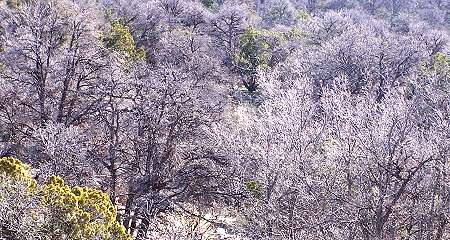
Air, Chemistry, Electrochemistry, Electromagnetic, Environmental, Food-Agriculture, Foundational, Global, Health, Social & Political Impacts - Agencies - Media, Soil, Water
THE SALTS OF OUR SOILS
On this page, Clifford Carnicom explores the distinct possibility that observed and measured saline stress on plants and trees in the southwest United States is coming from the metals and salts being found in the aerosols that are continuing to be researched. This paper raises some questions that deserve fair consideration with respect to the massive global effects from the aerosol operations on observed plant and tree die-offs.
Discussed here are some observed plant and tree die-offs in the southwest U.S. starting around the beginning of 1999, when the aerosol operations began to be observed en masse in this area. As well, ground conductivity testing at various altitudes is detailed from further Carnicom research around this same time. One of the die-off discussions centers on the local grasslands in the extremely dry southwest. A second discussion ensues regarding the major die-off of the Pinyon Pines species in this same area. Though there are current theories to explain these situations, the salination of the soils appears to be a main cause. Conductivity readings (and correspondingly, ion concentrations) seem especially high in these areas of die-off.
It has already been reported in previous Carnicom papers that the expected effect from the introduced aerosols is to heat up the lower atmosphere, and not to cool it as many have attempted to promote under the guise of a secret but benevolent motive. Under the best of circumstances it can only be determined that the aerosols will aggravate the drought and warming problems, if not actually induce these very conditions. Reduced forage productivity is already expected in part from the specific heat and desiccation properties of the aerosols.
